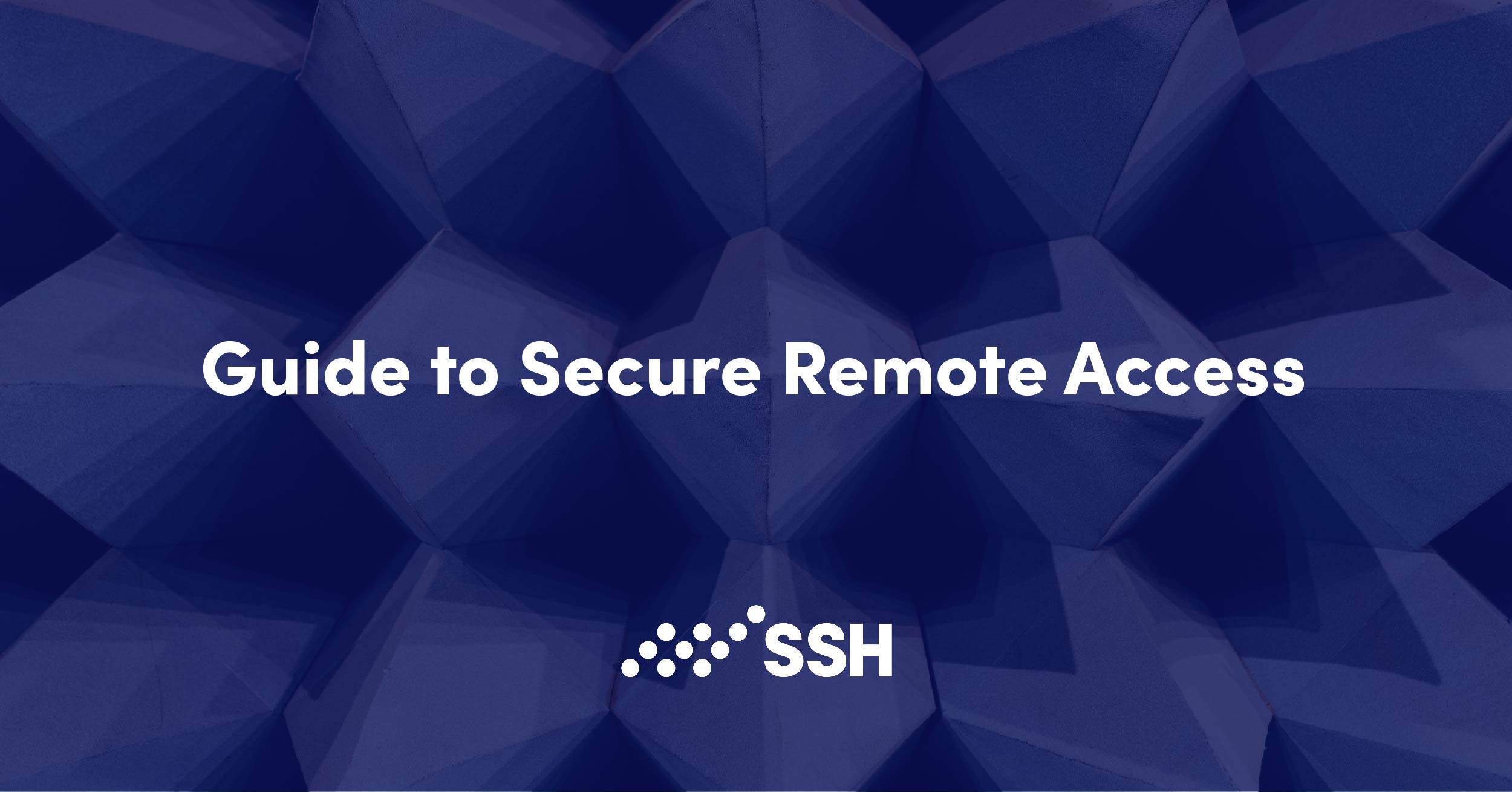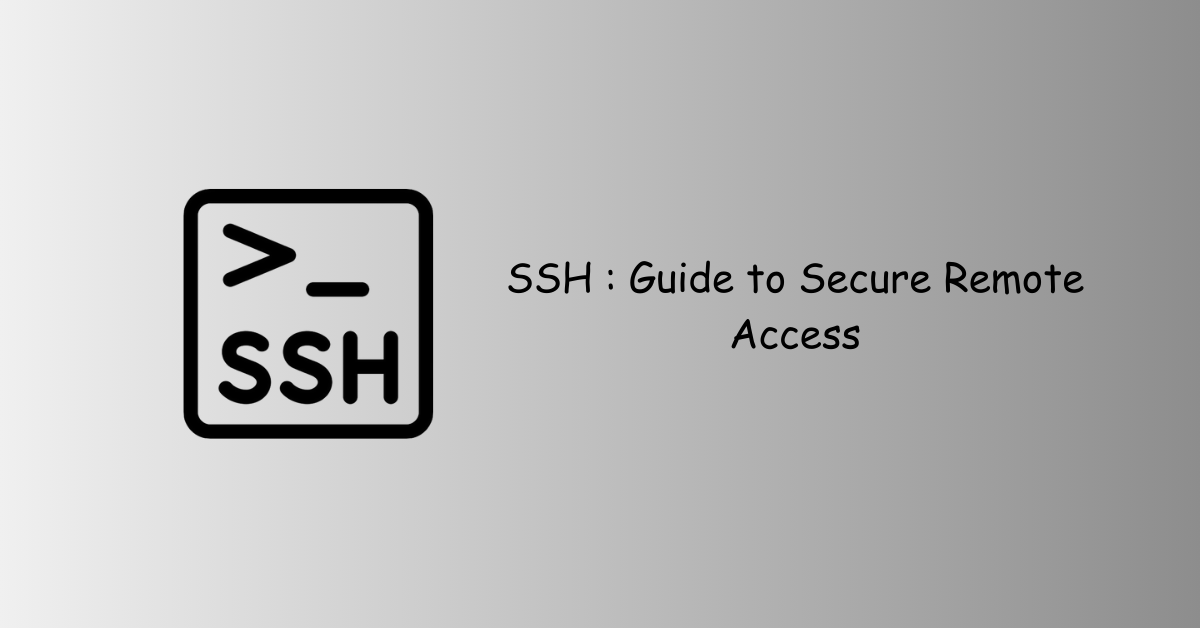Secure Remote Access SSH: Your Gateway To Safe Connections
Imagine this: you're sitting in a coffee shop, sipping your latte, and suddenly you need to access your company's server to grab some critical files. But wait—how do you ensure that your connection is secure and no one’s lurking around trying to steal your data? That’s where Secure Remote Access SSH comes in. It’s not just a buzzword; it’s your digital guardian when working remotely.
SSH, or Secure Shell, has been around for decades, but its importance has skyrocketed in recent years, especially with the rise of remote work. It's like a superhero cape for your online activities, keeping prying eyes at bay while you handle sensitive tasks. Whether you're a developer, IT admin, or even a casual user, understanding SSH can be a game-changer.
In this article, we’ll dive deep into the world of secure remote access through SSH. From its basics to advanced techniques, we’ll cover everything you need to know to protect your data and ensure peace of mind. So grab your coffee, and let’s get started!
Read also:Kody Arrested The Untold Story Behind The Headlines
What is Secure Remote Access SSH Anyway?
Alright, let’s break it down. SSH, or Secure Shell, is a cryptographic protocol designed to provide secure access to remote computers. Think of it as a secret tunnel between you and the server you want to connect to. This tunnel encrypts all data transmitted, making it nearly impossible for hackers to intercept or tamper with your information.
When you use SSH for secure remote access, you're essentially creating a secure pathway that allows you to interact with remote systems without exposing sensitive data. It’s widely used by developers, system administrators, and businesses to manage servers, transfer files, and execute commands securely.
Why Does Secure Remote Access Matter?
Here’s the deal: in today’s digital age, cybersecurity is more important than ever. With cyberattacks becoming increasingly sophisticated, having a secure way to access remote systems is crucial. Whether you're working from home, traveling, or managing servers across different locations, SSH ensures that your data remains safe and private.
Secure remote access via SSH offers several benefits:
- Encryption: All data transmitted through SSH is encrypted, making it difficult for attackers to intercept.
- Authentication: SSH uses strong authentication methods, such as passwords or public key authentication, to verify your identity.
- Integrity: SSH ensures that data isn’t altered during transmission, maintaining its integrity.
How Does SSH Work Under the Hood?
Now, let’s take a peek behind the curtain. When you initiate an SSH connection, several things happen in the background to ensure security:
First, your client and the server exchange cryptographic keys to establish a secure session. This process involves complex algorithms that ensure no one else can eavesdrop on your communication. Once the connection is established, all data exchanged between you and the server is encrypted, keeping prying eyes away.
Read also:Katie Price With Poo The Unfiltered Story You Never Knew
Key Exchange and Authentication
One of the coolest features of SSH is its key exchange mechanism. Instead of relying solely on passwords, SSH allows you to use public and private keys for authentication. Here’s how it works:
- You generate a pair of keys: a public key and a private key.
- You share your public key with the server, while keeping your private key, well, private.
- When you try to connect, the server uses your public key to verify your identity without exposing your private key.
This method is not only more secure but also more convenient, as you don’t have to remember complex passwords.
Setting Up SSH for Secure Remote Access
Ready to set up SSH on your system? Here’s a step-by-step guide to get you started:
Step 1: Install SSH Client and Server
Most modern operating systems come with SSH pre-installed. However, if you’re using Windows, you might need to install OpenSSH or use tools like PuTTY. On Linux or macOS, you can simply open the terminal and start using SSH.
Step 2: Generate Key Pairs
To enhance security, it’s recommended to use key-based authentication. Here’s how you can generate key pairs:
- Open your terminal and run the command:
ssh-keygen. - Follow the prompts to specify the location and passphrase for your keys.
- Copy your public key to the server using:
ssh-copy-id user@server.
Step 3: Connect to the Server
Once everything is set up, connecting to the server is as simple as typing:
ssh user@server
That’s it! You’re now securely connected to the remote server.
Best Practices for Secure Remote Access SSH
While SSH is inherently secure, following best practices can further enhance its effectiveness:
- Use strong, unique passwords or key-based authentication.
- Disable password authentication if you’re using key pairs.
- Regularly update your SSH client and server software to patch vulnerabilities.
- Limit access to specific IP addresses or networks.
By implementing these practices, you can significantly reduce the risk of unauthorized access.
Common SSH Commands You Should Know
Let’s face it—working with SSH involves using a lot of commands. Here are some of the most common ones you should know:
ssh user@server: Connect to a remote server.scp file user@server:/path: Copy files securely between local and remote systems.ssh-keygen: Generate SSH key pairs.ssh-copy-id user@server: Copy your public key to the server.
These commands will help you navigate and manage remote systems efficiently.
Advanced SSH Techniques
If you’re ready to level up your SSH skills, here are some advanced techniques to explore:
Tunneling and Port Forwarding
SSH tunneling allows you to forward traffic from one port on your local machine to another port on a remote server. This is particularly useful for accessing services behind firewalls or securing unencrypted protocols.
For example, to forward traffic from local port 8080 to remote port 80, you can use:
ssh -L 8080:localhost:80 user@server
SSH Config File
Managing multiple SSH connections can be cumbersome. That’s where the SSH config file comes in handy. Located at ~/.ssh/config, this file allows you to define aliases and settings for different servers, making your life much easier.
Security Challenges and Mitigation Strategies
Even with SSH, security challenges can arise. Here are some common issues and how to mitigate them:
- Brute Force Attacks: Use tools like Fail2Ban to block repeated login attempts.
- Weak Keys: Ensure you’re using strong, modern encryption algorithms like RSA 4096 or Ed25519.
- Outdated Software: Keep your SSH client and server up to date to patch vulnerabilities.
By staying vigilant and proactive, you can minimize risks and keep your data safe.
The Future of Secure Remote Access SSH
As technology evolves, so does the landscape of secure remote access. Emerging trends like quantum computing and post-quantum cryptography are shaping the future of encryption. While SSH remains a reliable choice, it’s essential to stay informed about advancements in cybersecurity.
Additionally, cloud-based solutions and zero-trust architectures are gaining traction, offering new ways to secure remote access. By embracing these innovations, organizations can enhance their security posture and adapt to changing threats.
Conclusion: Take Your Security to the Next Level
Secure remote access through SSH is a powerful tool that every tech-savvy individual should master. From its robust encryption to advanced features like tunneling and key-based authentication, SSH offers a comprehensive solution for safeguarding your data.
So, what are you waiting for? Start exploring SSH today and take your security to the next level. And remember, knowledge is power—share this article with your friends and colleagues, and let’s all work together to create a safer digital world.
Table of Contents
- What is Secure Remote Access SSH Anyway?
- Why Does Secure Remote Access Matter?
- How Does SSH Work Under the Hood?
- Setting Up SSH for Secure Remote Access
- Best Practices for Secure Remote Access SSH
- Common SSH Commands You Should Know
- Advanced SSH Techniques
- Security Challenges and Mitigation Strategies
- The Future of Secure Remote Access SSH
- Conclusion: Take Your Security to the Next Level


